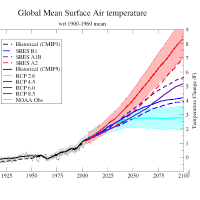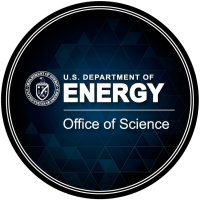
Michael Wehner
@MichaelFWehner
@BerkeleyLab Senior Scientist, specializing in extreme weather in the changing climate. #ClimateScience , IPCC WG1 AR5,6 Lead Author; US NCA2,3,4,5 Author
ID:1517200389145128960
21-04-2022 17:56:00
601 Tweets
655 Followers
97 Following


Back-to-back high category atmospheric river landfalls occur more often on the west coast of the United States disq.us/t/4nwacfo 🌧️📊Essential insights as we navigate climate change. Berkeley Lab Michael Wehner
#AtmosphericRivers #climate

An important new article led by Yang Zhou on back to back Atmospheric Rivers, an example of temporally compound events and the role of large scale meteorological patterns. Berkeley Lab
link.springer.com/article/10.103…


New work led by Mark Risser using Granger causal inference methods to attribute observed US precipitation changes to human influences, separating out GHG and aerosol effects


More on cat 6 from the insurance perspective. Berkeley Lab
theinsurertv.com/news-in-focus/…

Added to the debate about a new hurricane category 6 there is now one on extending the official Atlantic hurricane season, as proposed by World Meteorological Organization in view of ever earlier storms! Our views at #RealClimate , by @JimKossin, Tim Hall, Prof Michael E. Mann and myself. realclimate.org/index.php/arch…

Jeff Jeff Berardelli , indeed many print & broadcast meteorologists have missed the point of our cat 6 hurricane paper. However, Marshall Shepherd Dr. Marshall Shepherd has a editorial that makes it for us. forbes.com/sites/marshall…

Mega-hurricanes with wind speeds above 192 mph are becoming more and more common with climate change. As covered in The Guardian, a new paper with Michael Wehner Berkeley Lab as co-author suggests that we may need to create a Category 6 to describe them: theguardian.com/world/2024/feb…

Thanks Jeff Jeff Berardelli for the opportunity to clarify why we wrote this paper; to raise awareness about the dangers of climate change in hurricane prone regions (not to change hazard messaging when a storm is coming)




Adding a Category 6 to the scale that rates hurricanes could better describe storms with extremely fast wind speeds—which could increase in frequency as global temperatures rise, Nancy K. Walecki writes: theatlantic.com/science/archiv…

We introduce a hypothetical category 6 to the Saffir-Simpson Hurricane Wind Scale to convey the increased risk of very intense tropical storm due to climate change Berkeley Lab pnas.org/doi/10.1073/pn…



